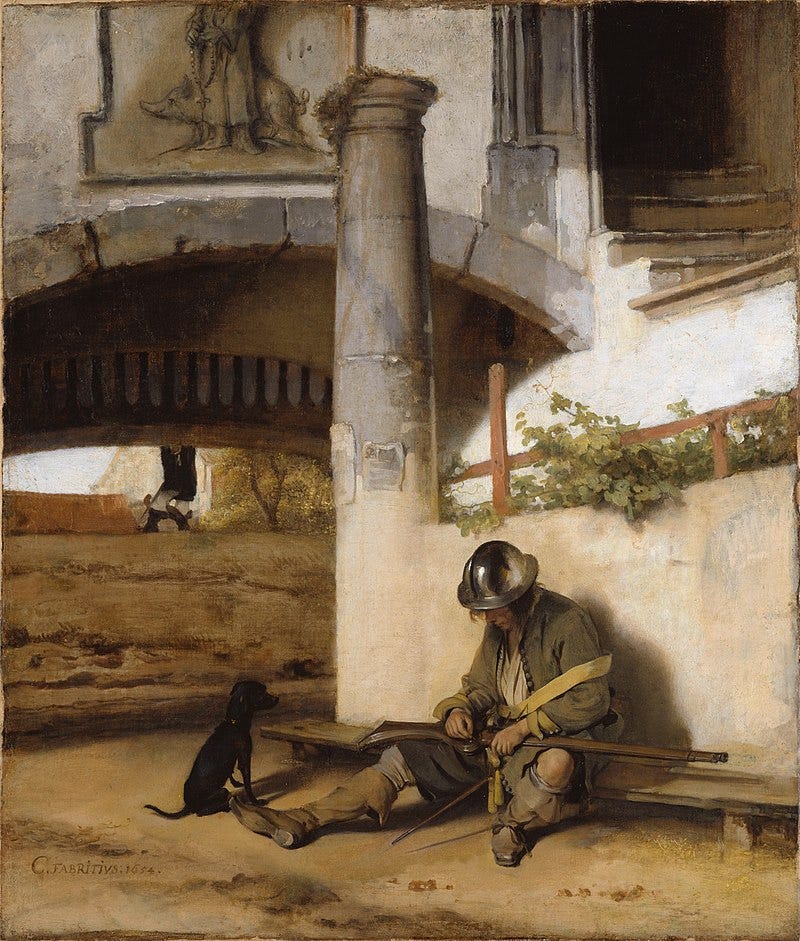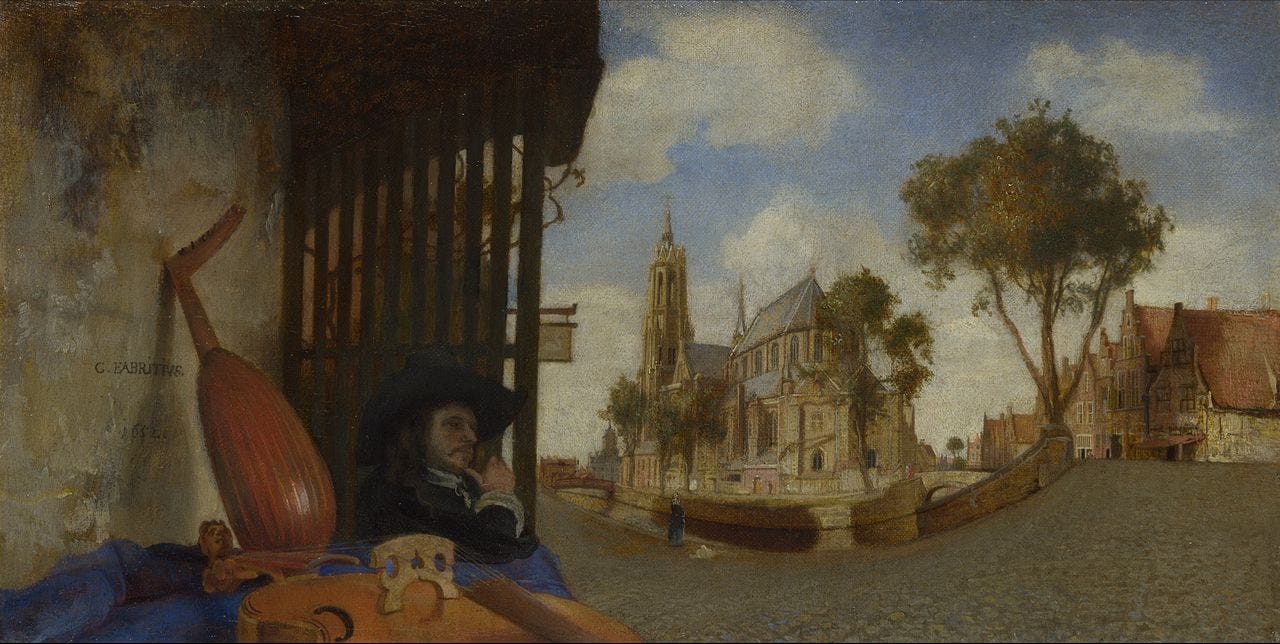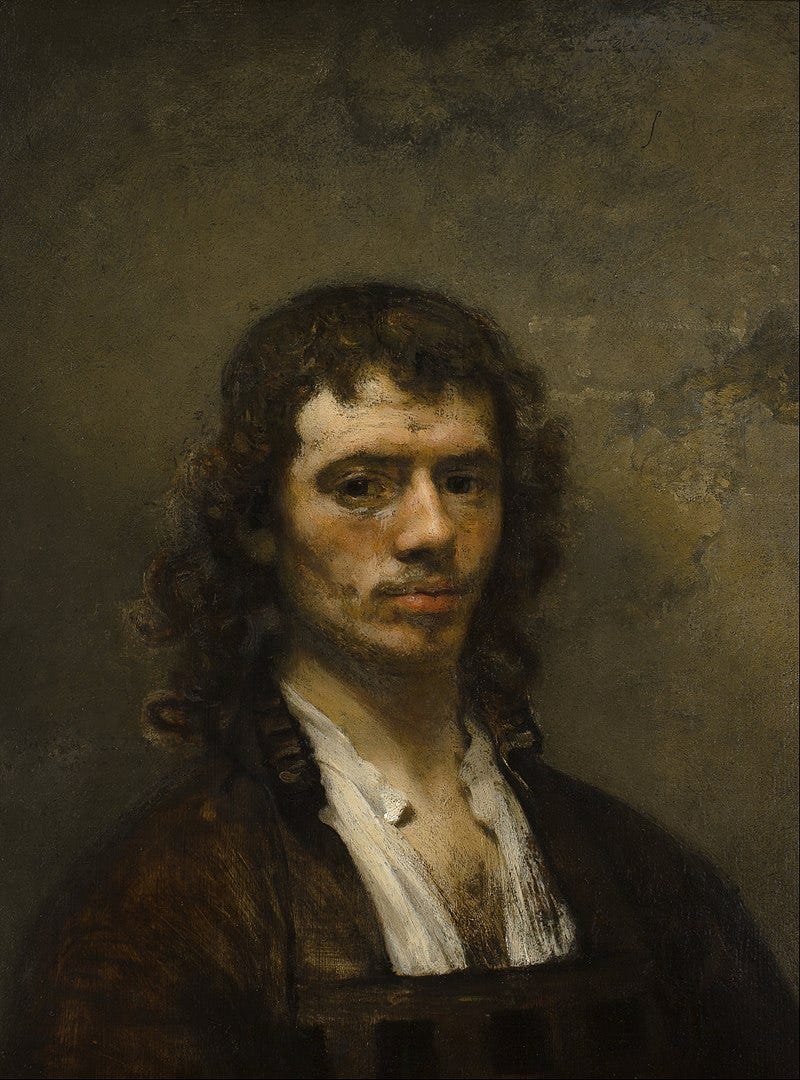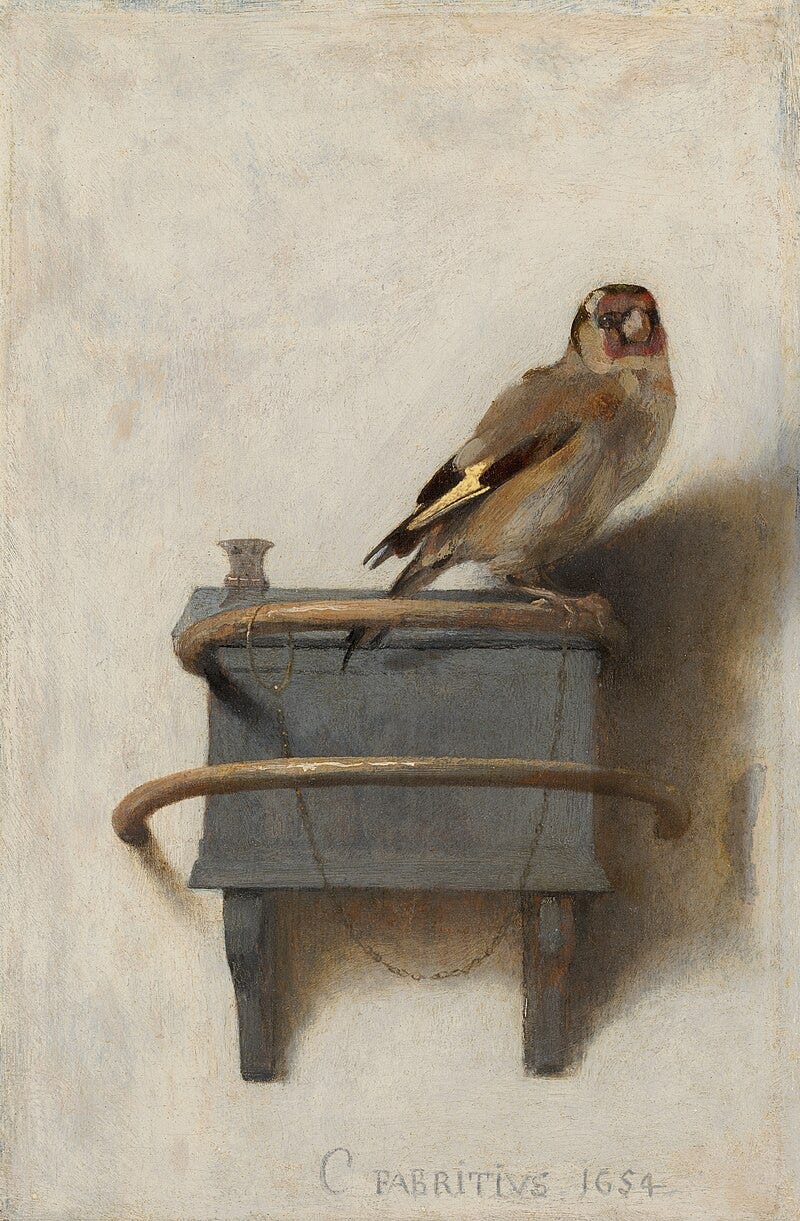Carel Fabritius was only 32 years old when he was killed in the ‘Delft Thunderclap’ . . . an accident where a weight of almost 90,000 lbs in gunpowder (stored beneath a disused convent) was accidentally detonated.
The explosion tore through an entire quarter of the city - and in fact, we can count ourselves lucky that it did not also take the life of another of Delft’s favourite son’s; Johannes Vermeer. (Who was only in his early 20s at the time)
But, still, the tragedy of Carel’s death feels particularly profound - especially as the blast also wiped out his painting studio and, by extension, the majority of his paintings too.
_
So, it is sad to think that we will never know the full extent of this man’s talent. Yet still, with the selection of work here today - taken from only a dozen or so paintings which did survive - I think we can see that Carel really did have the makings to be one of the greatest of his generation.
Originally training as a painter in Amsterdam - Carel served as an apprentice in the studio of none other than Rembrandt van Rijn. Thus, perhaps it is should be no surprise that he developed such a rare talent for capturing realism in these fluid, flourishing brush strokes.
But at the same time, one of the biggest risks of training with a true master like Rembrandt is that their sheer force of talent can become almost overwhelming.
After all, the likes of Michelangelo, Leonardo da Vinci, Raphael, and Peter Paul Rubens (among many others) all had workshops or “apprentices” too . . . yet none would ever go on to match the level of their master.
And incidentally, with Rembrandt himself - this happens a lot.
While we do know of quite a few artists to have trained with him (all with varying degrees of talent) . . . the truth is, in most cases, we find their style to be like a watered down version of the master’s own; almost as if they could never quite escape the great man’s shadow.
Whereas with Carel - clearly that is not the case.

While, the brushwork in his self portrait is reminiscent of Rembrandt’s - in many of his other works, we find much brighter colouring, and more intimate compositions which feel much closer to the style that Vermeer would eventually become so famous for.
And remember, Carel himself was at least ten years old than his Delft counterpart. . . hence, some people have tentatively suggested that Vermeer himself may have once studied under Carel’s tutelage, just as Carel had studied under Rembrandt.

But, whatever the truth may be - there is no doubt there paths must have crossed more than once during their time in Delft.
And had Carel lived longer, we can only imagine how many more secrets these two masters would have shared with each other.







I might have asked you this before George but have you read Donna Tartt’s novel ‘The Goldfinch’? (it won the Pulitzer Prize for fiction in 2014) Its central motif is the Carel Fabritius painting. I understand that Tartt was drawn to the painting’s delicate beauty and the tragic fate of its creator. The painting's survival, despite catastrophe, mirrors the novel’s themes of loss, resilience, and the enduring power of art. Tartt spent nearly a decade writing the book, during which she immersed herself in research on art history, restoration, and antiques. The novel’s rich detail about museums, art dealers, and collectors reflects this deep engagement. 2019 saw a film adaptation of the book, but for me, it doesn’t capture it’s depth and complexity.
I had never heard about this artist. His paintings are very nice. Thanks for the introduction.